Infuse Writing Standards into Video Game Design
A MiddleWeb Blog
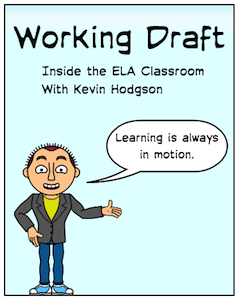 If you were to wander into my sixth grade classroom during our science-based video game design unit in December, you might wonder where all the writing is.
If you were to wander into my sixth grade classroom during our science-based video game design unit in December, you might wonder where all the writing is.
Where is the literacy in the English Language Arts classroom when all of the students are engaged in designing and producing video game projects with a science theme?
It’s there. And there. And there. We write all the time, but I realize that the literacy practices we are engaged in might be a bit less than transparent to those outside the game design project itself.
So, in an attempt to pro-actively stake out a defense on why video game design can be at home in the ELA classroom and how what we are doing fits within the curriculum standards, I have broken out the various writing that my writers did during the weeks of December, not just around science games but within a variety of game designing activities.
I would argue that there is an interesting symmetry between the Game Design Process and the Writing Process, and these parallel points allow students to view the process of writing from a different angle.
First and foremost, my students keep Game Developer’s Journals. This year, they did it in their Google Docs accounts, as part of a year-long digital writing portfolio effort. While I provide some guiding prompts, the idea is for them to step back from their work on designing a video game and reflect on the experience.
These game developer’s journals give me a sense of how they are doing, what problems they are running into and how they are finding workarounds, when needed. While they did not write in their journal every day, and we probably could benefit from more regular entries, the periodic check-ins were always valuable.
Literacy moments during game design
In addition students were engaged in a variety of literacy moments, including:
► Hacking Uno (Expository Writing): My students work collaboratively, in small groups, to re-imagine the card game of Uno. I present each group with a deck of Uno cards, dice, and some assorted odds and ends, and they must agree on remixing the game into something new. This exposes all sorts of work around language – talking and listening and negotiating viewpoints. Then students must write out a clear set of instructions for playing a new game. On another day the groups get split up, and the hacked games are played and the writing is analyzed for clarity.
► Video Game Storyboarding (Expository Writing): I tout this as the most fundamentally important part of our video game design project. Storyboarding means students craft a vision of their game levels, complete with narrative and sketches. This storyboard becomes the map from which they design their games (in the Gamestar Mechanic site that we use for our design project). While I do allow students to vary from the original storyboard when a better idea comes along, I encourage them to use the storyboard as the rough draft of their game concept. Here’s an example from a science-oriented game about buoyancy:
► Story-Framing (Narrative Writing): The concept of story-framing is that the video games they are designing and publishing will have a “story” behind the game, so that the “player” is experiencing the story as they play. We use Magic School Bus books as our mentor texts here, investigating how story can be used for entertainment and educational practices in a book, and for my students, a video game. Some story-frame ideas include a Hero’s Journey, a story of survival, an escape, a secret mission or a treasure hunt.
► Short Story (Narrative Writing): While the story-framing is the narrative of the game itself, students also write traditional short stories that extend the story-frame onto their writing notebook page. Students flesh out characters and plot design, writing a narrative companion piece to their video game project.
► Literature Board Game Design (Expository Writing): For this assignment, students must design on paper a board game companion project associated with a book they are reading for our independent literature unit. This includes a visual design of the game board as well as the objectives of the game.
► Game Cheat Codes (Argument Writing): One fascinating area of emerging gaming communities is the debate over the proliferation of “cheat codes” that are shared in social media, websites and YouTube that allow a player to “jump” ahead in levels, or find treasures, or discover a game developer’s “Easter Eggs” (hidden jokes). We set this up as a traditional claims/counter-claims argument piece of writing, and while most students admit they use cheat codes, the majority of students write passionately against the idea.
► Video Game Reviews (Persuasive Writing): Students use their knowledge of game design (mechanics of play, use of media, visual and audio elements, effectiveness, etc.) to craft a persuasive review of a chosen video game or mobile game app. They imagine their job is to persuade the audience to either buy or ignore a video game, and to show expertise in the field of video game design by using content-specific vocabulary.
► Advertising Campaign (Persuasive Writing): Following a lesson around “loaded words” in media advertising, in which we deconstruct advertising for various video games in the market, students create their own advertising for their science-based video game project. They include slogans and loaded words, all in an effort to find an “audience” that would play and buy their game if it were on the market (they are not).
Game design in the ELA classroom
There are times when I get a bit defensive about why video game design is happening in my English Language Arts classroom. This list of activities, not to mention the various connections to the Science Curriculum, allow me to stake my claim that while video game design is non-traditional, it can open up many avenues of reflective and powerful writing for students.
Also see Kevin’s 2013 post: Reluctant Writers and Game Design

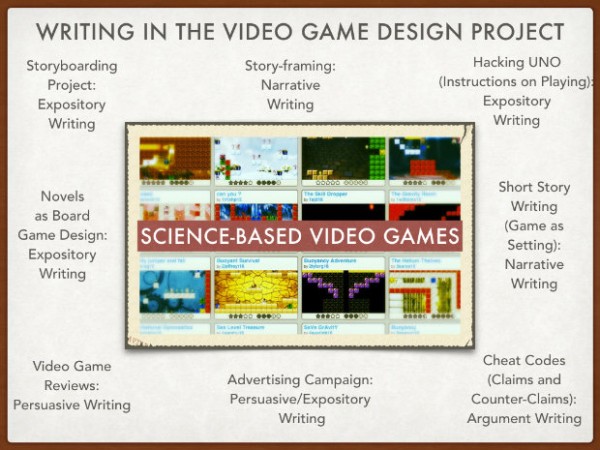
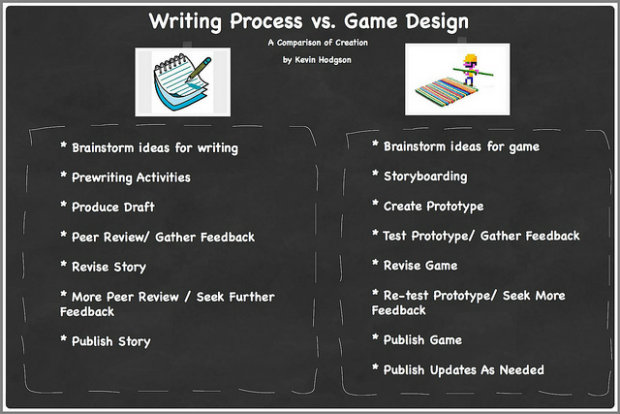
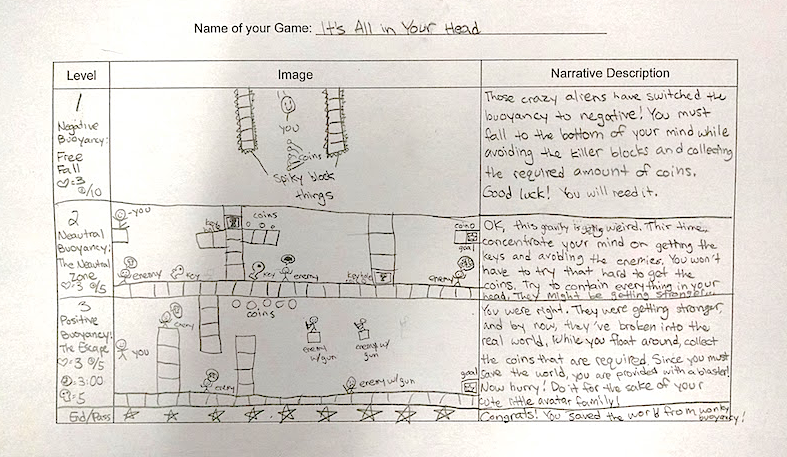

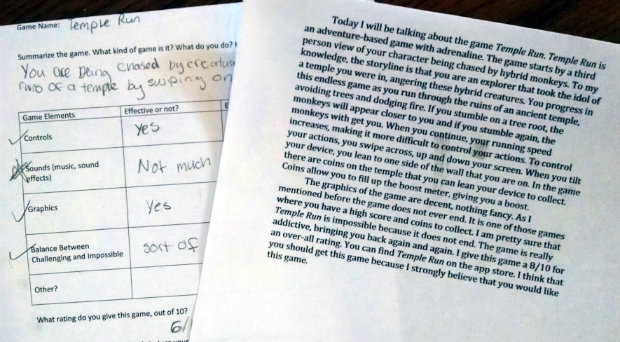
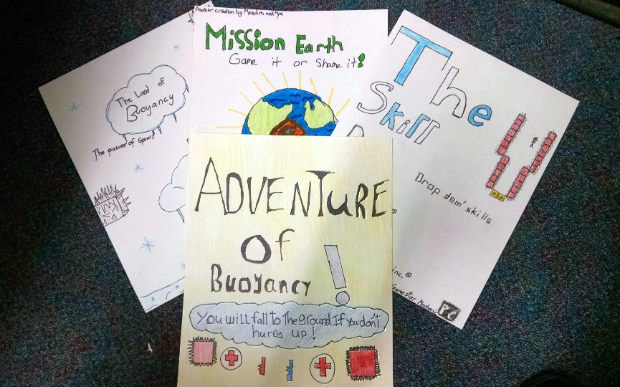



































Brilliant can’t wait to implement and share ideas! I know you work with ELA kids but I think this is a perfect approach for reluctant writers at the younger grades as well, tapping into an activity that in their eyes is WAY more interesting than writing. Love the connection. Thanks for sharing!
Thanks for taking the time to comment. I was asked about my opinion about age level for this kind of video game design, and my reaction was that fourth grade seemed like an ideal time to start. You could go younger, of course, but I think of the critical thinking and reasoning skills needed, and too much younger, and you lose that entryway into learning. Which is not to say it might not be a great extension activity for some young advanced thinkers.
Kevin
This post shows how a design focus can surface all kinds of writing opportunities; authentic, engaging writing opportunities. I appreciate you writing about how you can feel defensive about this type of innovation in the ELA classroom. From my viewpoint, the symmetry you’ve identified between the writing process and the design process might easily be labelled an equivalence- it is the composition process. The modality breaks from ELA tradition in an effort to support cross-curricular learning and infuse an important relevance. Posts like this help teachers see how your break from tradition still results in words on the (digital) page(s).
I am very excited about this project. I just have one question- did you use the free version of Gamestar Mechanic or did you purchase licenses for your class?